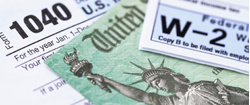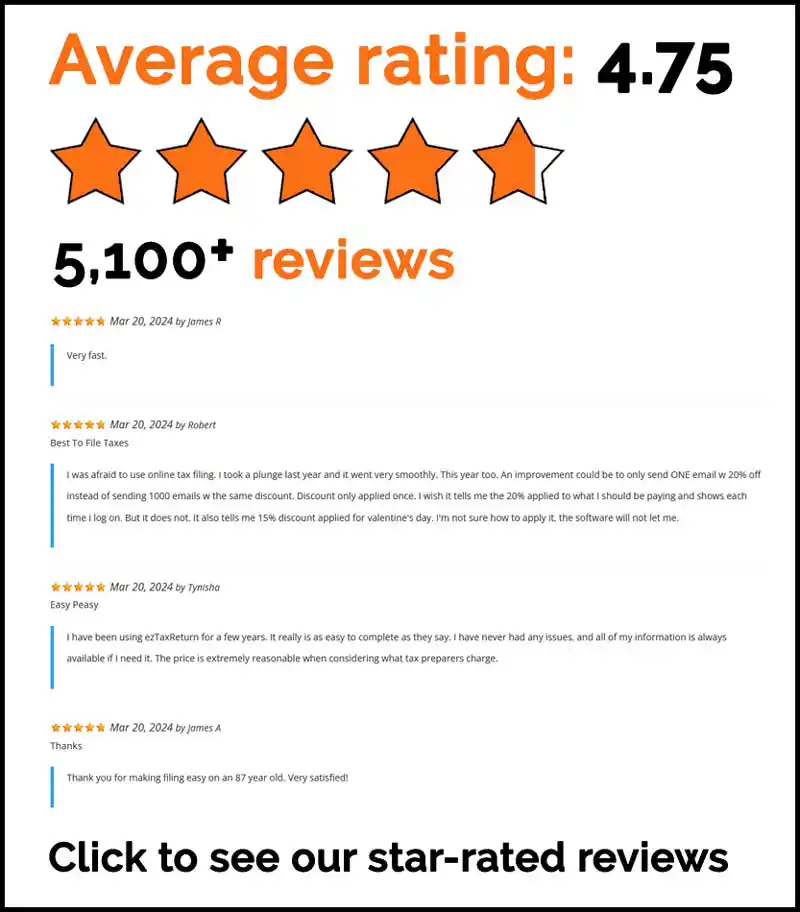The information in this article is up to date for tax year 2024 (returns filed in 2025).
Freelancing and self-employment are on the rise. In fact, over 64 million Americans freelanced in 2023. And current estimates project half of the U.S. workforce will be self-employed by 2027.
And it’s no surprise why. Freelancing brings a number of benefits, including flexibility, higher earning potential, remote and work-from-home offices, expanded career opportunities, and more.
But there’s one thing that makes most freelancers shudder: taxes.
When you’re an employee, taxes are typically straightforward. Your employer automatically withholds your taxes from your paychecks and issues your Form W-2, and you take your standard deduction. Easy peasy!
Freelancers, however, have a more complicated tax situation. When you’re a freelancer, you are responsible for tracking all income and expenses—usually for multiple clients—calculating and paying quarterly taxes throughout the year, and filing your annual return. Understanding how deductions, such as 50% of self-employment tax, can reduce your adjusted gross income is crucial for decreasing your overall tax liability.
If you’re new to the world of freelancing and aren’t sure where to start, you’re not alone. Use this guide to self-employment taxes to stay on track.
What is Self-Employment Tax?
Self-employment tax is something every freelancer or small business owner needs to understand. It’s an important part of managing your finances and keeping things running smoothly. Unlike income tax, which is based on your total earnings, self-employment tax specifically targets your net earnings from self-employment activities. This tax funds Social Security and Medicare, ensuring that self-employed individuals contribute to these essential programs.
The self-employment tax rate is 15.3%, which is divided into two parts: 12.4% for Social Security and 2.9% for Medicare. It’s important to note that as a self-employed individual, you are responsible for both the employee and employer portions of these taxes. This means you pay the full 15.3% on your net earnings, which are calculated by subtracting your business expenses from your gross income.
To report and pay your self-employment tax, you’ll need to use Schedule SE of Form 1040. This form helps you calculate the exact amount you owe based on your net earnings from self-employment. By understanding and accurately reporting your self-employment tax, you can ensure compliance and avoid any potential penalties.
Who Must Pay Self-Employment Tax?
If you have net earnings from self-employment of $400 or more, you are required to pay self-employment tax. This includes income from freelancing, independent contracting, and small business ownership. Even if you have other sources of income, such as a traditional job, you must still pay self-employment tax on your freelance earnings.
Additionally, if you have net earnings of $108.28 or more from church employment, you are also subject to self-employment tax. It’s important to remember that these tax rules apply regardless of your age or your current Social Security or Medicare status. Whether you’re a young entrepreneur or a retiree earning extra income, self-employment tax obligations remain the same.
By keeping track of your net earnings and understanding when you need to pay self-employment tax, you can stay compliant and avoid any surprises come tax season.
Tracking Self Employment Income
All income earned through your business as an independent contractor or from informal side gigs is considered self-employment income and is taxable.
Unlike a W-2 job, where your employer handles income reports, running a freelance business—whether full-time or as a side hustle—means you need to track all your financials yourself. Keep careful records of both your business income and any expenses you may incur. Health insurance costs can be deducted from income taxes, which is an important financial consideration for self-employed individuals.
As a freelancer, you likely work with multiple clients, which can make the tax prep season a little more cumbersome since you will need to report each source of income. If you earned more than $600 from your client(s), they are required to send you a Form 1099-NEC reporting the income paid to you that tax year.
Note: You still need to report all income on Form 1040, even if you earned less than $600 from a client and don’t receive a 1099-NEC from them.
IRS forms you’ll need: 1099-NEC (formerly 1099-MISC), 1099-K (if paid through PayPal or similar services)
Paying Self-Employment Taxes
As a freelancer, you are your own boss. This means you are responsible for both income and payroll taxes (i.e., self-employment taxes). Self-employment taxes are 15.3% of net earnings in 2024 and cover the FICA taxes (Social Security and Medicare) that businesses automatically withhold from W-2 employee paychecks. Self-employed individuals are subject to both Social Security and Medicare taxes, with Social Security tax at 12.4% and Medicare tax at 2.9%. Additionally, an extra 0.9% Medicare tax applies to income exceeding specific limits based on filing status.
As a freelancer, you cover both the employee and employer portions of the tax. Your net earnings, for tax purposes, are your gross income from self-employment minus business expenses.
Use IRS Schedule C to calculate your net earnings from self-employment. And use IRS Schedule SE to then calculate the self-employment tax you owe.
IRS forms you’ll need: Schedule SE, Schedule C
Making Quarterly Estimated Payments
When you’re an employee, your employer withholds your taxes on each paycheck to pay the government throughout the year. That’s why, if you end up paying more than your tax liability, you get a refund when you file.
For freelancers, you don’t have an employer to automatically withhold taxes for you. But you are still responsible for paying taxes on your income throughout the year if you expect to owe more than $1,000. These are called quarterly estimated taxes, which, as their name implies, are taxes you pay on your income every quarter. If you don’t make your estimated quarterly tax payments and wait to pay when you file, you could be hit with late penalty fees. It is crucial to meet specific due dates for these payments to avoid penalties.
Estimated Tax Deadlines 2024
- April 15, 2024
- June 17, 2024
- September 16, 2024
- January 15, 2025 (for income earned in Q4 2024)
If you earned freelance income last year, you can use that to estimate your taxable income for 2024 and divide that into four equal payments. Or you can calculate your income quarterly and estimate your taxes as you go.
You can pay your estimated taxes directly through the Electronic Federal Tax Payment System, or by check through the mail with Form 1040-ES slips. If you owe any more taxes not covered by your quarterly payments, you’ll pay the balance when you file your annual return.
IRS forms you’ll need: Form 1040ES, W-4
Avoiding or Reducing Self-Employment Tax
While self-employment tax is a necessary part of freelancing, there are strategies you can use to reduce your tax liability. One effective way is to lower your net earnings by deducting legitimate business expenses. These can include costs such as office supplies, travel expenses, and even a portion of your home office expenses.
Another valuable strategy is to claim 50% of your self-employment tax as an income tax deduction. This deduction can help reduce your overall taxable income, potentially lowering your income tax bill. To take full advantage of this deduction, make sure to accurately calculate and report your self-employment tax on Schedule SE.
Using a tax preparation service can help you identify additional deductions and credits, ensuring you pay only what you owe and nothing more.
Filing Freelance Taxes
As a freelancer, you are considered self-employed by the IRS. This means you must file your taxes as a business owner using IRS Schedule C, Profit or Loss from Business, along with your Form 1040.
E-filing with is a fast and simple way to get your freelance taxes done this season. Using a self-employment tax calculator can be a helpful resource for estimating your tax obligations. ezTaxReturn walks you through the filing process to help you uncover qualified deductions and credits and calculate your taxable income.
IRS forms you’ll need: IRS Form 1040, IRS Schedule C
Common Tax Deductions for Freelancers
The good thing about working for yourself is that there are many valuable deductions and credits you can claim as an independent contractor to reduce your taxable income. These deductions can also reduce your income taxes and potentially lead to significant tax savings.
Here are just a few:
- Home office deduction
- Continuing education
- Mileage on your car
- Self-employment taxes
- Retirement contributions
- Office supplies
- Phone and internet expenses
- Business travel
- Qualified business income deduction
The rule of thumb for business tax deductions is that they must be ordinary and necessary for the course of your business.
File your freelance taxes with ezTaxReturn. You’ll get the biggest possible refund and 100% accurate results, guaranteed.
The articles and content published on this blog are provided for informational purposes only. The information presented is not intended to be, and should not be taken as, legal, financial, or professional advice. Readers are advised to seek appropriate professional guidance and conduct their own due diligence before making any decisions based on the information provided.




